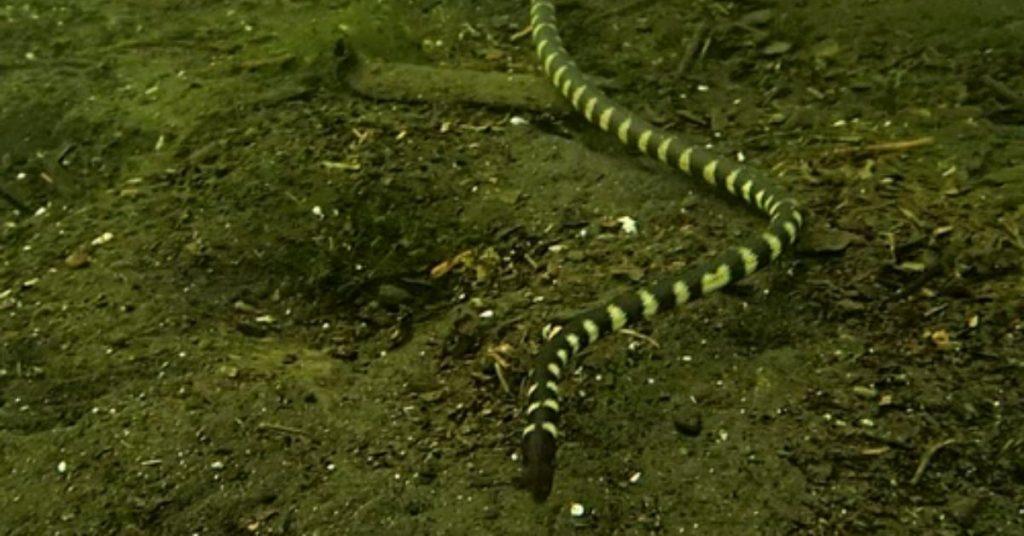
What’s the first thing you’d do if you see a sea snake? For many people, the answer seems to be “kill it dead.” After all, when self-preservation kicks in, compassion and rationality tend to be the first things to get kicked out. However, while it isn’t surprising that some take this approach when it comes to animals that look dangerous, it’s unfortunate when the species in question isn’t actually that aggressive—and when the species is a rare, mysterious, and endemic one whose numbers may be dwindling, it’s downright tragic.
Also known as Garman’s sea snake, the Philippine freshwater sea snake, the Luzon sea snake, and duhol matapang, the Taal sea snake (Hydrophis semperi) was discovered by naturalist Carl Semper in Lake Taal, its only known habitat. It’s also one of the smallest sea snakes, with adults ranging from 19.7 to 29.5 in (50 to 70 cm) in length. It has black or deep blue skin with yellowish or white bands, as well as a flat, paddle-shaped tail. Aside from those details, though, we know very little about it.
Don’t let the term “sea snake” fool you: The duhol matapang lives and thrives in freshwater, making it one of only two known sea snake species in the world with this trait. Experts think its ancestors may have become landlocked and closed off from the ocean eons ago. This is also the likeliest explanation behind the evolution of Lake Taal’s other unique denizens, such as the world’s only known freshwater Sardinella, the tawilis.
Despite being two to five times as venomous as a cobra, the duhol matapang, like the yellow-lipped sea krait and many other sea snakes, isn’t known to be an aggressive attacker. In fact, these small-fanged snakes are quite docile, and generally attack only when provoked. Sadly, not a lot of people know this; thus, encounters between humans and the duhol matapang rarely end well for the latter.
Humans aren’t the only major threat to their survival, though. Like many other species in Lake Taal, chemical pollutants (e.g. pesticides, untreated sewage, petrol wastes) from factories and commercial establishments threaten their existence on an almost-daily basis. And with the recent Taal eruption and the COVID-19 pandemic, one can only hope that it isn’t too late for Filipinos to learn more about our only freshwater sea snake.
Still remember your 5th-grade science classes? Test your knowledge and see if you still remember these facts and fundamental concepts in human anatomy, biology, botany, and other branches of science. Click here to try the “Are You Smarter Than A Pinoy Fifth-Grader” Challenge.
Follow the hashtag #FlipFacts on Facebook and Instagram to get your daily dose of science trivia!
References
- https://www.gmanetwork.com/news/publicaffairs/borntobewild/310682/snakes-in-the-water-on-born-impact/story/
- https://web.archive.org/web/20070302020730/http://www.haribon.org.ph/?q=node%2Fview%2F153
- https://newsinfo.inquirer.net/1113619/duhol-matapang-another-taal-lake-resident-threatened-by-extinction
- http://www.snakesinthephilippines.com/info/406/Philippine%20freshwater%20sea%20snake/Garman’s%20sea%20snake
Author: Mikael Angelo Francisco
Bitten by the science writing bug, Mikael has years of writing and editorial experience under his belt. As the editor-in-chief of FlipScience, Mikael has sworn to help make science more fun and interesting for geeky readers and casual audiences alike.









